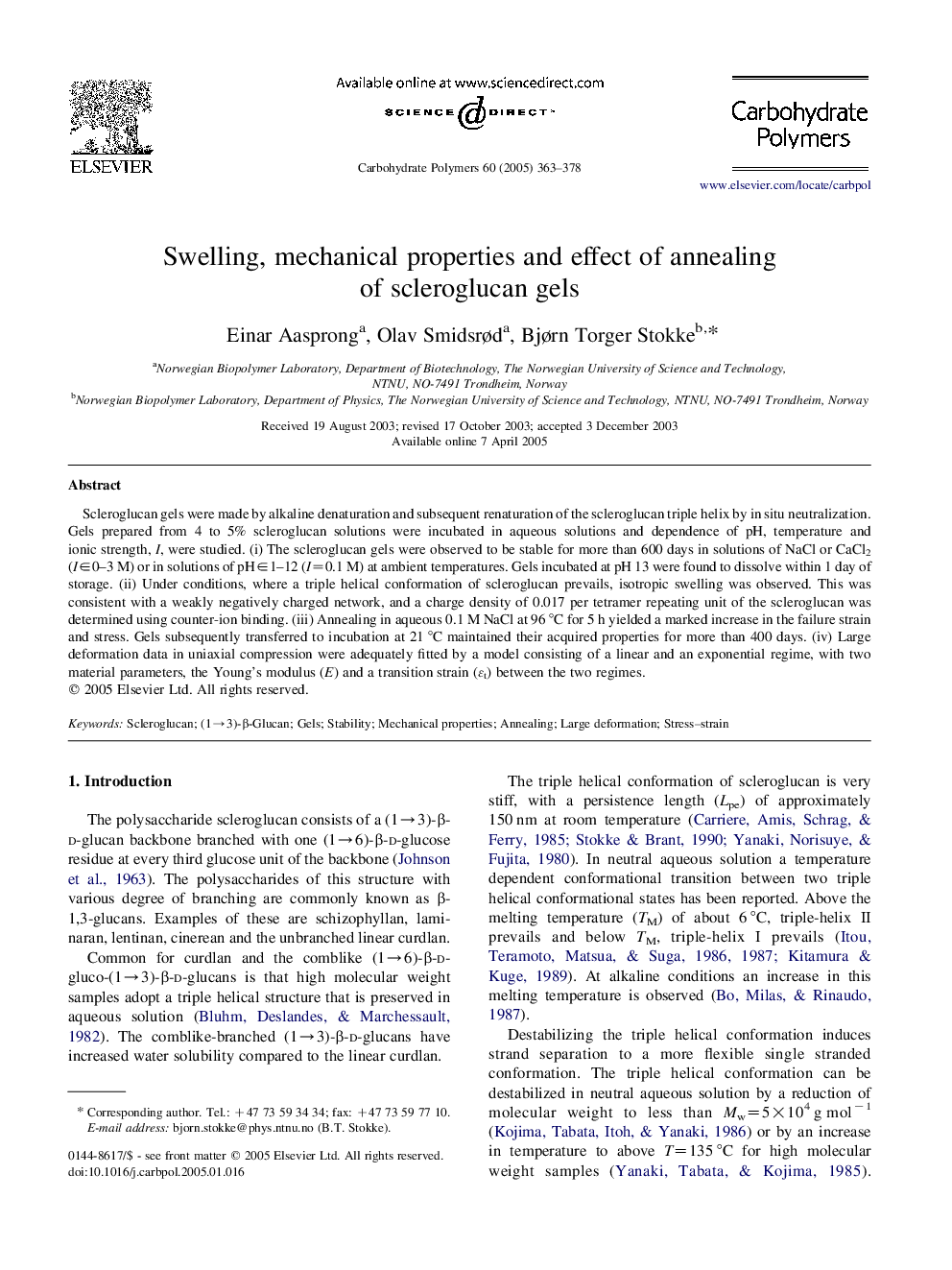| Article ID | Journal | Published Year | Pages | File Type |
|---|---|---|---|---|
| 10604911 | Carbohydrate Polymers | 2005 | 16 Pages |
Abstract
Scleroglucan gels were made by alkaline denaturation and subsequent renaturation of the scleroglucan triple helix by in situ neutralization. Gels prepared from 4 to 5% scleroglucan solutions were incubated in aqueous solutions and dependence of pH, temperature and ionic strength, I, were studied. (i) The scleroglucan gels were observed to be stable for more than 600 days in solutions of NaCl or CaCl2 (Iâ0-3 M) or in solutions of pHâ1-12 (I=0.1 M) at ambient temperatures. Gels incubated at pH 13 were found to dissolve within 1 day of storage. (ii) Under conditions, where a triple helical conformation of scleroglucan prevails, isotropic swelling was observed. This was consistent with a weakly negatively charged network, and a charge density of 0.017 per tetramer repeating unit of the scleroglucan was determined using counter-ion binding. (iii) Annealing in aqueous 0.1 M NaCl at 96 °C for 5 h yielded a marked increase in the failure strain and stress. Gels subsequently transferred to incubation at 21 °C maintained their acquired properties for more than 400 days. (iv) Large deformation data in uniaxial compression were adequately fitted by a model consisting of a linear and an exponential regime, with two material parameters, the Young's modulus (E) and a transition strain (εt) between the two regimes.
Related Topics
Physical Sciences and Engineering
Chemistry
Organic Chemistry
Authors
Einar Aasprong, Olav Smidsrød, Bjørn Torger Stokke,
